A Culture of Employee Engagement Benefits
Taking a close look series
- Part 1: Workplace Morale
- Part 2: Employee Engagement
- Part 3: Employee Retention
Employee Engagement
Contrary to popular belief, people need only a few things to become highly engaged employees: a sense of social responsibility and purpose and the right day-to-day employee benefits. Yet, unfortunately, not many companies have a successful grasp of the concept of employee engagement.
In fact, according to Gallup:
- Only 32% of U.S. workers are engaged in the workplace
- 50.8% aren’t engaged
- 17.2% are “actively disengaged”
Human Resources departments are taking on the consequences of this as well. They’re drowning in paperwork from high turnover, low performance levels, increased healthcare costs, and more.
Companies forget that employee engagement and creating an engaged workforce truly come down to cause and effect. Payactiv has done extensive research on engagement and looks at how your business can benefit from improving employee engagement. Read on to learn how you can leverage the inner workings of high employee engagement, which will lead to high-performing employees.
What Is Employee Engagement?
An employee is engaged when they’re invested in the organization’s success. Employee engagement is measured by the emotional commitment an employee has to the organization and its goals. Not only does this increase on-the-job engagement in already-assigned tasks, but it also results in employees exhibiting discretionary effort to stay engaged at work.
This may seem like a no-brainer in the sense that a higher level of engagement is good for an organization. However, this positive impact is systemic, extending from immediate success such as improved customer satisfaction all the way to higher shareholder returns.
Its process looks something like this:
- High employee engagement leads to happier people
- Happy and engaged employees deliver better customer service, which leads to happier customers
- Happier customers lead to increased sales
- Increased sales lead to higher levels of profit
- Higher levels of profit lead to higher shareholder returns and overall business success
So, the value of having engaged employees shouldn’t be underestimated. Employee engagement is the ultimate business prerequisite. Without employee engagement, most companies face impending failure (at best, they’ll achieve mediocre results in the long term). Conversely, organizations with engaged employees perform superiorly, seeing higher net profit margins, retention rates, and net promoter scores (NPS). Essentially, it becomes a domino effect in business success, with employee engagement being the first domino to fall. Happy employees lead to a successful business.
The Science of Employee Engagement
If you’ve never heard of ‘positive psychology,’ here’s a brief overview:
Positive psychology is defined as “the scientific study of human flourishing, and an applied approach to optimal functioning. It has also been defined as the study of the strengths and virtues that enable individuals, communities, and organizations to thrive.” Driven by a humanistic perspective that focuses on happiness and well-being, much of positive psychology surrounds the fact that the happier you are, the more you thrive in all aspects of life.
Studies on Positive Psychology Explain its Measurable Impact
- The positive emotions one feels from volunteering can improve well-being and overall life satisfaction, as well as decrease depression and lower the risk of dying early. (US Corporation for National and Community Service Strategic Plan for 2011–2015)
- Creating positive thoughts by recalling pleasant memories or thinking about something you enjoy can immediately improve your mood. This can help improve engagement and avoid exhaustion from faking smiles during work. (Michigan State University, 2011)
- In a SoulPancake study, participants wrote letters about those they looked up to the most. Then, they called the individuals they wrote about and expressed their gratitude. Participants’ happiness increased by 4-19%.
In turn, (not surprisingly) organizations are increasingly interested in positive psychology’s role in the workplace and how they can leverage this concept to increase employee engagement.
However, this concept is solidified even further in the neurological realm.
Positive emotions lead to a rise in “feel-good chemicals” in the brain. Rises in these chemicals increase feelings of immediate happiness, but they also enhance learning. It improves the ability to think quickly, creatively, and look at things in new ways, enhancing problem-solving skills and retaining complex information. Experiencing positive engagement in the workplace isn’t only good for business, but it releases chemicals in the brain which allow for higher thinking capacity.
When employees are happy, they thrive. Consequently, so does their employer’s business. However, some underlying factors need to exist for employees to feel true engagement.
Studies on Employee Engagement
A Cone Communications study highlights the importance of knowing how to engage the “modern, enlightened employee.” Employees of today expect their employers to care about them as individuals, especially benefit-wise. They also expect opportunities to be of service, such as avenues to participate in volunteer programs or ways to help those in need, be it in-office or on their own time. Moreover, they’re interested in a company’s corporate responsibility (CR) efforts, assessing its contributions to society’s social and environmental well-being.
The Findings on Employee Engagement Are Eye Opening
- 78% of employees are OK with their work and personal life intersecting more as long as employers provide benefits that help balance both
- 78% say they want to be an active participant in helping their company improve its responsible business practices by providing feedback, ideas, and potential solutions
- 47% believe companies need to find a balance around providing opportunities that focus on individuals’ interests and the social and environmental issues most important to the business
- 88% feel their job is more fulfilling when they’re provided opportunities to make a positive impact on social or environmental issues
Why Do Employees Care So Much about Corporate Responsibility?
Employees need to feel connected to the organization’s missions, goals, and values. It’s about making an impact. What’s more, according to Deloitte, over 40% of Millenials and Gen Zs say that making a positive impact on the community and society is important to them. With purpose-driven jobs comes happier employees, which leads to high engagement.
Employers with great corporate responsibility but poor employee benefits still don’t make the cut. Employees can’t possess “corporate responsibility” if there’s a lack of benefits being offered to employees. Employees cannot connect or invest their full efforts in an organization’s mission if the organization isn’t invested in their well-being.
They’re unable to emotionally get behind a company that doesn’t support them with the relevant benefits. Furthermore, the 90 million American workers living with imminent financial stress and stress-related health issues struggle to stay engaged in even their personal tasks, let alone their organization’s missions and values. Maintaining their status quo trumps the need to go above and beyond for the company.
High employee engagement requires an honest appraisal of employee needs. To complete this task successfully, the employer must recruit unending compassion and sincerity within themselves to find the appropriate solutions and go the extra mile.
And for the employer with workers paid $25 per hour or less, offering a financial wellness benefit is non-negotiable. The mental distractions that come with financial stress disconnect an employee from their in-the-moment job responsibilities and the ability to connect to a company’s mission.
Understanding the Role of Financial Stress
Businesses are normally worried about their needs. When they inquire what employees need, money is often a taboo, unspoken issue. This unaddressed topic of employee financial stress is plaguing the U.S. economy in most industries:
- 71% of employees say they suffer from financial stress
- 20% of employees miss work to deal with a financial emergency or because of health issues related to financial stress
- 60-80% of workplace accidents are attributed to stress
- Stress costs U.S. businesses $300 billion per year
How can you use this information to improve employee engagement?
Employee Engagement Strategies
If employers offer a financial wellness benefit, employees are more capable of engaging in the workplace. Cultivating a connection and emotional investment in the company’s mission is truly attainable at this point, as the employer has shown their commitment to them in providing a real solution to their day-to-day financial wellness needs.
Some employee engagement strategies include:
- Regularly conducting employee surveys: Find out your employees’ job satisfaction and get constructive feedback on improving working conditions.
- Focusing on employee financial wellness to lessen the burden of financial stress: Employees with less financial stress can give their undivided attention to their work.
- Creating opportunities: Give employees a sense of responsibility for the company’s impact on a societal level.
Then—and only then—an employee can connect to the company’s higher mission. They can see clear as day that this employer isn’t only dedicated to contributing to society’s social and environmental well-being, but they’re also actively contributing to their health and wellness.
From there, the connection and trust have been made. This is where high engagement thrives.
Employees do need more than a financial wellness benefit. They need to feel like they’re making an impact and are contributing to society in a measurable way. Yet financial wellness for the employees making $25 per hour or less is the foundational measure to take. Corporate responsibility, workplace engagement, and trust and connection can then exist.
What Is the Culture of Your Company?
Four key types of workplace culture exist in businesses today.
Clan Culture
In a clan culture, people interact in a relaxed, friendly, and positive manner. You’ll often find that employees have much in common beyond just their jobs – shared interests, personal values, and hobbies, for example. In clan cultures, leaders are respected rather than feared. People who work at such companies report high levels of collaboration, teamwork, and idea-sharing.
Adhocracy Culture
In organizations with adhocracy cultures, there’s a focus on innovation and winning in the marketplace. Life in these companies is fast-paced, and there’s seldom a “dull moment.” People are encouraged and even expected to try out new things, take calculated risks and experiment.
Market Culture
In organizations with market cultures, there’s a relentless focus on the customer, becoming the most successful player in the marketplace, and achieving consistently strong revenues and performance. There’s an expectation that people will unquestioningly do whatever is required to get the job done and meet tight deadlines.
Hierarchy Culture
As the name suggests, in hierarchy cultures, there’s a strong emphasis on structure and control. These organizations are meticulous about making rules and setting boundaries – and people are expected to abide by them without complaining or asking questions.
How Can I Assess the Culture of a Company?
Some people find company culture to be an intangible and difficult-to-grasp concept, but that doesn’t mean it can’t be reviewed, measured, and improved upon.
The best place to start is by defining, documenting, and broadly communicating your company culture. Next, put in place some solid metrics to measure the success of your culture-building efforts. Here, be sure not to think of success as a static “score” but rather the convergence of multiple, relevant data points.
Ideally, use a combination of different metrics to assess the strength of your company culture, including the results of traditional employee engagement surveys and focus groups, retention/attrition metrics, and feedback gathered during exit interviews. Company intranets are useful to gauge the tone of communication within your organization and see how effective teams are in collaborating with one another.
What’s the Link Between Employee Engagement and Company Culture?
Organizational culture is among the top indicators of employee satisfaction and one of the principal reasons that almost two-thirds of people remain with their employer.
In companies with a strong organizational culture, levels of employee engagement are high. People are productive and proactive. Perhaps most importantly, they’re meaningfully engaged with one another as human beings. In such organizations, it’s typical to observe the following behaviors:
- People genuinely care about and are interested in their co-workers as friends.
- They support one another and show empathy if someone is going through a difficult time.
- There’s little to no finger-pointing or backstabbing, and honest mistakes are forgiven.
- People seek to inspire one another.
- Leaders lead by example.
- Everyone treats their colleagues with respect and displays integrity at all times.
Contact Payactiv to boost your employee engagement through financial wellness today.
Check out the other posts in this series about Morale, Retention, and Retention Strategies to help drive business success.
Get Payactiv for your business
Related Articles
Learn how Payactiv can help you take the friction out of pay advances with...
When measured in monetary terms, the direct costs of replacing an employee can...
Compassionate workplace culture not only breeds happier employees, but also...
© 2025 Payactiv, Inc. All Rights Reserved
24 hour support: 1 (877) 937-6966 | [email protected]
* The Payactiv Visa Prepaid Card and the Payactiv Visa Payroll Card are issued by Central Bank of Kansas City, Member FDIC, pursuant to a license from Visa U.S.A. Inc. Certain fees, terms, and conditions are associated with the approval, maintenance, and use of the Card. You should consult your Cardholder Agreement and the Fee Schedule at payactiv.com/card411. If you have questions regarding the Card or such fees, terms, and conditions, you can contact us toll-free at 1-877-747-5862, 24 hours a day, 7 days a week.
** Central Bank of Kansas City does not administer, nor is liable for earned wage access.
Payactiv holds earned wage access services (EWA) license number 2591928EWA with the Wisconsin Department of Financial Institutions.
Apple and the Apple logo are trademarks of Apple Inc., registered in the U.S. and other countries. App Store is a service mark of Apple Inc., registered in the U.S. and other countries.
Google Play and the Google Play logo are trademarks of Google LLC.
Galaxy Store and the Galaxy Store logo are registered trademarks of Samsung Electronics Co., Ltd.




